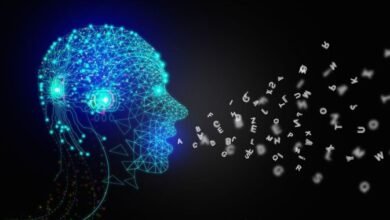
Top 8 Essential Components Used in Drones-
In today’s modern world drones are used for many reasons, including filming, military surveillance and recreational activities drones fall under and intersection of aerospace robotics and mechatronics. They can range from entirely antonymous military -grade rules to your average remote-controlled drones you might see a kid flying in the park Another name for drones is unmanned Aerial vehicles, or UAV.
These machines are primarily used in situations where the conditions are too dry, distant, dull and dangerous for human pilots. However, the term Drone can be highly misleading as there are many diverse kinds. In this blog post, we will delve into the essential components used in drones, including motors, propellers, transmitters, batteries, and more, to understand how they contribute to the functionality and performance of these aerial machines.
Motors-
Next are the Motors, there is a separate motor for each blade on Arm. Motor decisions are based on requiring power and what do you want the motor to do. At the heart of every drone are its motors, which provide the necessary thrust to lift the aircraft off the ground and maintain stable flight. Drones typically use brushless DC motors due to their efficiency, reliability, and power-to-weight ratio.

Propellers
Propellers play a crucial role in determining a drone’s performance and flight characteristics. Propellers are the wings of the Drone and can be made from plastic or Carbon fiber. Carbon fiber is the more durable choice, but it is also more expensive. The propeller’s size should also be appropriate for your intended use.

Batteries-
The power of the drones comes from its batteries which come in a wide variety of weight and capacities as the capacity of the battery increases, so does its weight. The primary function of batteries is to supply power for drones. Drone batteries are typically high-rate lithium batteries with a high energy density, lightweight design, and high current resistance. If flight control is a drone’s brain, then the battery is its heart. The drone battery system supplies the actual power required by the engines to lift off, and its performance will affect the drone’s total flying length, speed, and stability.

Transmitter-
The transmitter and receiver help in communication between the Drone and the person controlling the transmitter transmits the signal, and the receiver receives it. Transmitters, also known as remote controllers or radio controllers, enable pilots to communicate with their drones and control their movements remotely.

Flight controllers
Flight controllers are the brains of the drone, responsible for stabilizing the aircraft, processing sensor data, and executing flight commands. The receiver connects to the flight controller, which receives these inputs and then sends the responses to the motors.

Electronic Speed Controllers (ESCs): — ESC stands for Electronic Speed Controller. ESCs regulate the speed and direction of each motor by adjusting the electrical current supplied to them. It is an electronic circuit that connects the motor, battery, and flight controller, and its principal function is to adjust the speed and direction of the drone. An Electronic Speed Controller (ESC) is a purpose-built device that controls the speed of an electric motor. An ESC can track the motor’s location and speed in real-time using one of two approaches. The first method involves employing external sensors attached to the motor (sensored systems). The second method involves getting voltage data from the motor itself (sensorless systems).

Sensors:
Various sensors have been integrated into the drones to improve the sensitivity of the drones for collecting critical project data and the drone’s ability to whenever around challenging Terrain with this information drones can also maintain their positions determine how fast they are and avoid obstacles before moving on to the sensors.

Conclusion: The above components are essential building elements that help drones function, perform, and achieve their potential. Understanding the key components mentioned in this article is critical for drone consumers and experts alike. Each component of a drone, whether it is the motor, propeller, transmitter, or battery, is essential to its working and performance.
At Aebocode Technologies, we specialize in manufacturing high-quality drone products, including motors, propellers, and more. For more information on our range of drone components and accessories, feel free to contact us. Let us help you take your drone projects to new heights.
Want more details Contact us at +91 83604–33249




